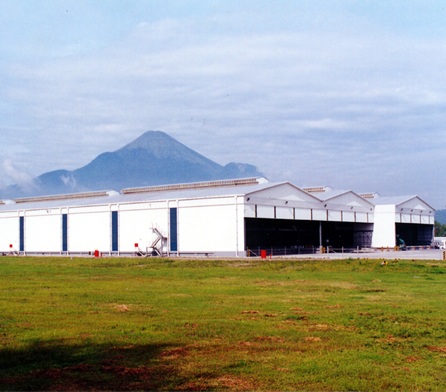Nestlé Feasibility Study
| Client: | Nestlé |
| Location: | Gempol, East Java. |
| Scope overview: | Conduct a comprehensive feasibility study for a new central warehousing and distribution facility |
Project Description
Wiley finds efficient and effective warehousing solutions for PT Nestlé Indonesia
CLIENT
Nestlé is an iconic international brand producing and supplying a vast array of food and beverage products throughout the world.
OBJECTIVES
Nestlé Indonesia contracted Wiley to construct a 15,000m2 central warehousing and distribution facility in Gempol, East Java.
This facility needed to provide maximum efficiency in throughput and handling, durable and low maintenance facilities, and flexibility for future expansion and changes in transport and handling.
CHALLENGES
As part of its advice service, Wiley identified the requirement to clearly determine the client’s needs and the project cost-efficiencies and operational issues before commencing design work.
A comprehensive feasibility study would form the basis of Wiley’s recommendations to the client on the most appropriate building size and layout, construction materials, equipment, storage methods, inventory management systems and land acquisition options to achieve the client’s project objectives.
SOLUTIONS
The feasibility study considered design logistics for storage, building size, and operating procedures, equipment availability and service performance, and project deliverables. As a comprehensive preliminary study, it offered the client:
- An analysis based on cost per pallet and relative benefits for each of five storage system options: block stack, drive through, double reach, selective, and stacker crane
- A comparison of design options for each of the five storage systems
- Recommendation of the system offering lowest operating cost and greatest efficiencies
- A workable operating procedure detailing the proposed logistics and equipment requirements of factory dispatch, receiving, put away, replenishment, order picking, dispatch, and delivery vehicle loading
- An analysis of equipment availability and local market competitiveness and diversity
- Workable concept plans based on design logic for internal warehouse layouts, truck manoeuvring and loading dock facilities, maintenance facilities, site access, and car parking requirements
- A basic building footprint and minimum site area requirement, based on analysis
- A building description and material schedule describing the standard of construction within budget estimates and allowing for a building that is durable, economical and functional, and includes protection systems from forklift and truck operations
- Project cost estimates combining land, building, equipment, and management systems for two options (drive through and stacker crane).
RESULTS
Through the feasibility study, Wiley identified client needs, cost-efficiencies and operational issues early in the project and directed Nestlé Indonesia towards a facility that would successfully achieve its objective for the growing market of Indonesia.
The facility features:
- Seven-high, double and single deep selective racking for efficient stock rotation
- Very flat, durable concrete floors for efficient use of high-reach forklifts (unparalleled in Indonesia at the time of construction)
- A fully piled foundation system
- An in-rack VESDA aspirating smoke detection system
- A 700m2 mezzanine floor for special order packing
- A 100 per cent standby power facility
- A self-sufficient treated water supply from an onsite deep well installation
- Capacity for future extension as the market dictates.
Nestlé Indonesia, the world’s largest food producer, now has a central warehousing and distribution facility that enables it to cater for strong sales growth in Bali and East and Central Java and to further strengthen its foothold in an expanding regional market.
